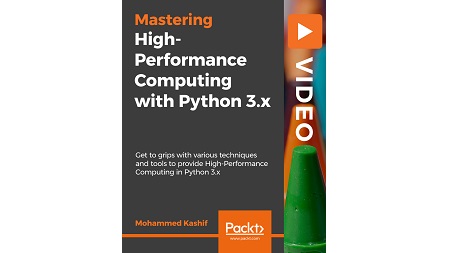
English | MP4 | AVC 1920×1080 | AAC 48KHz 2ch | 4h 12m | 1.17 GB
Build high-performance, distributed, and concurrent applications in Python
Python is a versatile programming language. Many industries are now using Python for high-performance computing projects.
This course will teach you how to use Python on parallel architectures. You’ll learn to use the power of NumPy, SciPy, and Cython to speed up computation. Then you will get to grips with optimizing critical parts of the kernel using various tools. You will also learn how to optimize your programmer using Numba. You’ll learn how to perform large-scale computations using Dask and implement distributed applications in Python; finally, you’ll construct robust and responsive apps using Reactive programming.
By the end, you will have gained a solid knowledge of the most common tools to get you started on HPC with Python.
This hands-on course covers all the important aspects of high-performance computing using Python 3.x. Throughout the course, we’ll go over the various techniques, modules, frameworks, and architectures needed for high-performance computing. This course is designed with minimal theory and maximal practical implementation followed by step-by-step instructions to get you up-and-running.
What You Will Learn
- Use lambda expressions, generators, and iterators to speed up your code.
- A solid understanding of multiprocessing and multithreading in Python.
- Optimize performance and efficiency by leveraging NumPy, SciPy, and Cython for numerical computations.
- Load large data using Dask in a distributed setting.
- Leverage the power of Numba to make your Python programs run faster.
- Build reactive applications using Python.
Resolve the captcha to access the links!